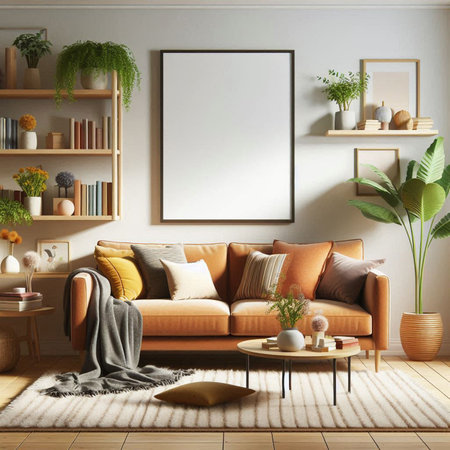Setting Your Budget and Priorities
When it comes to furnishing your home in the UK on a tight budget, the first step is to set a clear spending limit and determine what truly matters for your living space. Begin by assessing your overall finances—factor in all your monthly outgoings such as rent or mortgage, utilities, groceries, and transport. Once you’ve established how much you can comfortably allocate towards furniture, stick to this figure to avoid overspending. Next, create a checklist of essential items you need for daily living, such as a bed, sofa, table, and chairs. Prioritise these big-ticket pieces before considering decorative accessories or non-essentials. In British homes, multi-functional furniture like storage beds or extendable dining tables are practical choices that maximise both value and utility. Remember, not every room needs to be fully furnished immediately; focus on the rooms you use most often—typically the bedroom and living area—and add to your collection gradually as funds allow. This methodical approach will help ensure your money is spent wisely, and your new home meets your most pressing needs from day one.
2. Affordable British Furniture Shops Reviewed
Furnishing your home on a tight budget is perfectly achievable in the UK thanks to a range of retailers offering both style and value. Below, we take an honest look at some of the most popular options: IKEA, Argos, Dunelm, and British Heart Foundation charity shops. Each brings its own strengths and weaknesses, making them suited to different needs and tastes.
IKEA
IKEA is synonymous with affordable flat-pack furniture and clever Scandinavian design. The range covers everything from basic essentials to more stylish pieces, all at reasonable prices. The trade-off is that you’ll need to assemble items yourself, and delivery can be costly if you don’t have a store nearby. Still, it’s hard to beat for variety and modern aesthetics.
Argos
Argos offers convenience with thousands of products available online and in-store, often with same-day click-and-collect options. The furniture selection covers a broad spectrum—think beds, sofas, tables—at wallet-friendly prices. While quality can be variable (especially at the lowest price points), Argos is excellent for finding budget solutions quickly.
Dunelm
Dunelm specialises in home furnishings and décor, with a good balance between affordability and quality. Their furniture ranges are especially strong for soft furnishings, storage solutions, and occasional furniture. You’ll also find frequent sales and seasonal discounts, making it a favourite for those looking to stretch their pounds further.
British Heart Foundation Charity Shops
If you’re open to preloved finds, British Heart Foundation charity shops offer surprisingly robust selections of second-hand furniture at low prices. Stock changes frequently, but you can pick up everything from dining sets to wardrobes—often in great condition. Plus, shopping here supports a good cause and helps keep usable items out of landfill.
Quick Comparison Table
| Shop | Main Strengths | Considerations |
|---|---|---|
| IKEA | Wide range, stylish designs, affordable pricing | Self-assembly required; delivery fees |
| Argos | Convenient ordering & collection; regular deals | Quality varies; limited showroom experience |
| Dunelm | Good mix of price & quality; strong on soft furnishings | Selection may not suit every taste |
| BHF Charity Shops | Sustainable choice; bargain prices; unique finds | Stock varies by location; items are preloved |
Summary
No matter your budget or style preferences, these UK stores make furnishing your home accessible without breaking the bank. Whether you opt for brand-new or second-hand pieces, each retailer offers unique advantages worth considering as you plan your space.

3. Second-hand Finds: Charity Shops and Online Marketplaces
When it comes to furnishing your home on a tight budget in the UK, second-hand shopping is an absolute staple. British culture has long celebrated the art of thrifting, and you’ll find that charity shops, car boot sales, and online marketplaces offer a treasure trove of pre-loved bargains waiting to be discovered.
Charity Shops: Community Gems
From Oxfam and British Heart Foundation to local hospice shops, charity shops are dotted across every high street. Not only do they offer everything from vintage sideboards to quirky crockery, but your purchases also support worthy causes. Visit regularly—stock changes quickly, and the best finds rarely stick around for long. Don’t hesitate to chat with shop staff; sometimes they can let you know when new furniture or homeware donations are due in.
Online Marketplaces: Modern Bargain Hunting
Platforms like Gumtree and Facebook Marketplace have revolutionised bargain hunting in Britain. These sites are full of sofas, dining sets, wardrobes, and decorative items at a fraction of their original price—or even for free if you’re willing to collect. Set up alerts for items you need in your area and be prompt in messaging sellers; the best deals go quickly. Remember to check item condition before committing, and always arrange viewings in public places or bring a friend along for safety.
Hints and Tips for Sourcing Pre-Loved Treasures
- Be patient—great bargains often require persistence and regular browsing.
- Brush up on basic DIY skills for minor repairs or upcycling projects. A lick of paint or some new handles can transform a piece.
- Measure twice! Always check dimensions against your available space before collecting bulky items.
- Bargain politely—British etiquette values courtesy. If negotiating on price, remain friendly and reasonable.
- Keep an eye out for annual British events like local jumble sales or “Freecycle” days where neighbours give away unwanted goods.
By embracing the British love of thriftiness and sustainability, second-hand sources can help you furnish your home stylishly without stretching your wallet. Happy hunting!
4. DIY Upcycling and Maintenance Tips
Furnishing your home on a tight budget doesn’t mean you need to compromise on style or quality. With a little bit of DIY spirit, you can transform old or second-hand furniture into statement pieces, while also ensuring they remain functional and sturdy. Below is a step-by-step guide to upcycling and basic maintenance using tools and supplies commonly found in British hardware stores like B&Q, Wickes, or Homebase.
Step-by-Step Guide: Refreshing Old Furniture
- Assessment: Inspect the piece for structural integrity. Check for loose joints, missing screws, or damaged surfaces.
- Cleaning: Give the item a thorough clean with warm soapy water and a soft cloth. For tougher grime, use sugar soap – readily available at most UK hardware shops.
- Sanding: Use medium-grit sandpaper to remove old varnish or paint. This helps new finishes adhere better. Always sand in the direction of the grain.
- Repair: Tighten screws with a screwdriver (Philips or flathead as appropriate). Fill any cracks or holes with wood filler – Ronseal is a popular British brand.
- Painting or Staining: Apply a coat of primer if painting, then follow up with your chosen colour or stain. Quick-drying paints from Dulux or Crown are widely stocked in UK stores.
- Finishing Touches: Add new handles or knobs, which can be picked up cheaply from Wilko or The Range. Attach felt pads underneath legs to protect floors.
Essential Tools & Supplies List
| Tool/Supply | Purpose | Where to Buy (UK) |
|---|---|---|
| Screwdriver Set | Tightening/assembling furniture | B&Q, Argos |
| Sandpaper (medium & fine grit) | Smoothing surfaces | Wickes, Screwfix |
| Sugar Soap | Cleaning before painting | B&Q, Homebase |
| Wood Filler | Patching holes/cracks | The Range, Toolstation |
| Paint/Primer/Stain | Finishing look | Dulux Decorator Centre, Wilko |
| Painters’ Tape & Brushes | Tidy edges and application | Poundland, B&M |
| Replacement Handles/Knobs | Update style | IKEA, The Range |
| Felt Pads | Protect flooring | B&Q, Wilko |
Quick Fixes for Common Furniture Issues
- Squeaky Chairs: Apply WD-40 or light oil to moving joints; tighten all visible screws.
- Dented Surfaces: Place a damp cloth over the dent and apply a hot iron for 30 seconds; the steam helps raise the wood grain.
- Lopsided Tables: Check for uneven legs and add self-adhesive pads under the shorter leg for balance.
- Peeling Veneer: Carefully glue down loose edges with PVA glue and clamp until dry.
A Note on Safety and Sustainability
If youre sanding or using strong cleaning products, make sure to open windows for ventilation and wear protective gloves and masks where appropriate. Upcycling not only saves money but also reduces waste—perfect for eco-conscious Brits looking to furnish their homes stylishly without breaking the bank.
5. Essential Items Versus Nice-to-Have Extras
When furnishing your home on a tight budget, it’s crucial to separate the must-haves from the nice-to-haves. This approach ensures you allocate funds wisely and create a comfortable, functional living space without overspending.
Identifying Core Household Needs
Start by listing the items you genuinely need for daily living. For most British homes, essentials include a bed or mattress, somewhere to sit (like a sofa or sturdy chairs), and basic kitchen equipment such as a kettle, toaster, cooker, and fridge. Storage solutions—wardrobes, shelves, or chests of drawers—are also important for keeping your space organised and safe.
Safety and Comfort First
Don’t compromise on items that affect your wellbeing. A reliable heater for chilly UK winters, smoke alarms, and proper lighting are non-negotiable. Make sure any second-hand electricals from charity shops or Gumtree meet current safety standards; ask about recent PAT testing or visible certification stickers.
Avoiding Unnecessary Extras
It’s easy to be tempted by decorative cushions, trendy lamps, or quirky coffee tables in high street stores like Dunelm or Argos. While these can add personality, they’re not urgent purchases. Instead, wait for sales or visit local car boot fairs where non-essentials often come at a fraction of the price—or hold off entirely until you’ve settled in and know what your space truly needs.
Stretching Your Budget Further
Prioritise function over form: opt for versatile furniture like extendable tables or foldaway chairs found at IKEA or Wilko. Repurpose what you already own, or scour Facebook Marketplace for bargains before buying new. Remember, focusing on essentials first means your limited budget goes further while still providing comfort and safety—a key principle in British home maintenance.
Saving Money Without Compromising Quality
When furnishing your home on a tight budget, it’s tempting to focus solely on price. However, in the UK’s variable climate and with daily use, choosing well-made pieces and maintaining them properly is essential for long-term value. Below are some practical tips to help you spot decent quality even at lower price points, along with advice on keeping your furniture in top condition for years to come.
Spotting Value: What to Look For
First, always inspect furniture in-store where possible. In British shops like IKEA, Argos, or Dunelm, check joints and fixings—solid wood dowels or sturdy metal connectors generally last longer than flimsy staples or visible glue. For upholstered items, look for dense foam cushions and tightly woven fabrics; these withstand the damp and fluctuating temperatures common in UK homes. Flat-pack options can be cost-effective but choose those with clear assembly instructions and robust fittings.
Key Materials That Stand Up to British Homes
Pine and oak are popular choices for longevity—avoid chipboard if you want your furniture to survive more than a few house moves. Metal frames are a good shout for beds and tables as they cope well with humidity. When buying second-hand from local charity shops or Facebook Marketplace, check for signs of woodworm or damp damage, which can be an issue in older British properties.
Maintenance Tips: Keep Your Furniture Going Strong
Once you’ve chosen wisely, regular maintenance will make all the difference. Use coasters on wooden surfaces to guard against tea rings—a very British hazard! For fabric sofas and chairs, vacuum regularly and use removable covers if possible for easy washing. Tighten screws and bolts every few months, especially after moving house or during seasonal changes when materials may expand or contract due to humidity.
Final Thoughts: Invest Time Over Money
The key to furnishing your home affordably without compromising quality lies in a little extra effort—scrutinise before you buy, prioritise sturdy materials suited to the UK environment, and commit to routine care. With these habits, your furnishings will see you through many years of British living without breaking the bank.


